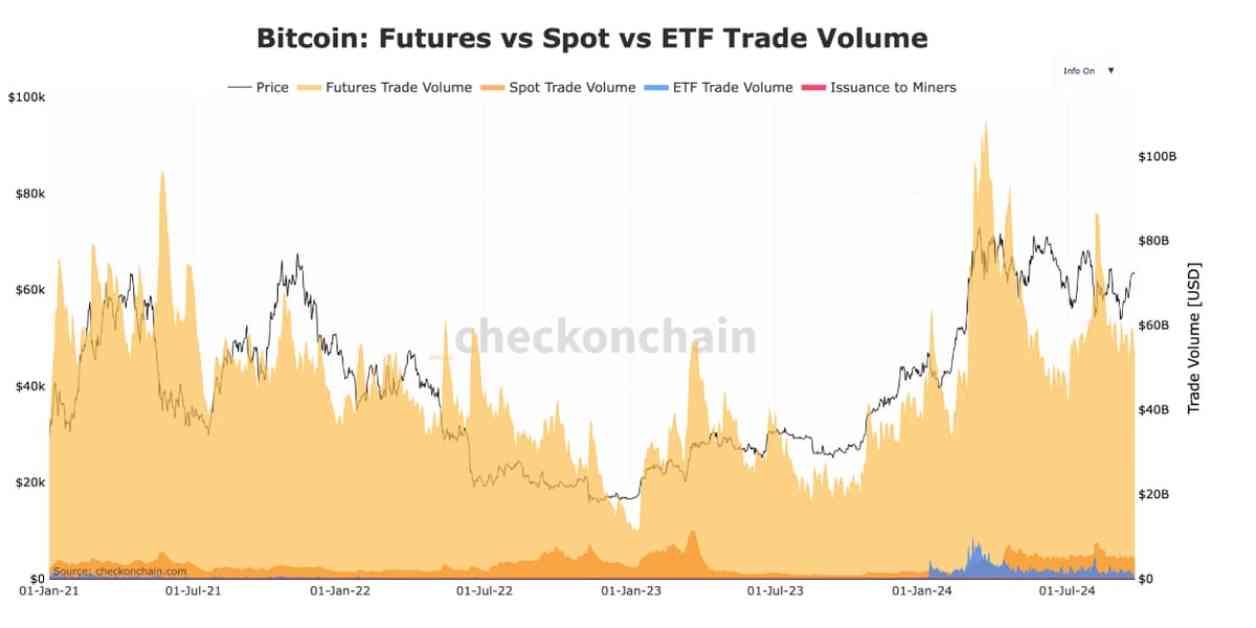Bitcoin exchange-traded funds (ETFs) have been making waves in 2024, attracting a total net inflow of $18.9 billion and currently holding approximately 869k BTC. This marks a significant milestone in the world of ETFs, with the launch of 2,000 ETFs this decade. Notably, iShares Bitcoin Trust (IBIT) and Fidelity Wise Origin Bitcoin Fund (FBTC) have emerged as top players in terms of assets.
Despite the success of Bitcoin ETFs, they still represent a small fraction of the overall bitcoin trading volume. On the last trading day, ETFs accounted for only 3% of the total market volume, with the bitcoin futures market trading $53.4 billion and the spot market trading $4.5 billion.
One driving force behind the inflows into Bitcoin ETFs is the “basis trade”, where investors aim to profit from the price difference between the spot and futures price. This market-neutral strategy involves going long on the underlying asset while shorting the futures contract to capture the premium between the two prices.
Looking at IBIT’s largest holders, institutions like Goldman Sachs and Jane Street Capital are authorized participants involved in creating and redeeming ETF shares. Hedge funds like Millenium Management and Capula Management are also likely using the ETF for the basis trade strategy.
Moving forward, private wealth management firm Bernstein sees the institutional basis trade as a potential catalyst for adoption. As liquidity in the ETF market grows, net long positions could increase. Additionally, the approval of physically settled options tied to IBIT could attract more sophisticated investors looking to earn passive yield or hedge their positions.
As ETF adoption continues to rise, liquidity and investor participation are expected to improve, further solidifying Bitcoin ETFs’ place in the market. With these developments, the future looks bright for Bitcoin ETFs and the broader cryptocurrency industry.














